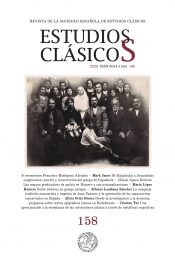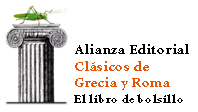DE KATPATUKA A JONANISTÁN: SURGIMIENTO, MUERTE Y RESURRECCIÓN DEL GRIEGO DE CAPADOCIAFrom Katpatuka to Ionanistan: The rise, demise and reawakening of Cappadocian Greek
Mark Janse
Universidad de Gante
El Prof. Mark Janse is BOF-ZAP Research Professor en Griego Antiguo y de Asia Menor en la Universidad de Gante y Associateen Lingüística griega en el Center for Hellenic Studies de la Universidad de Harvard. Estudió Clásicas (1981), Hebreo (1983) y Lingüística histórica (1985) en la Universidad de Gante, donde obtuvo también el doctorado en Lingüística griega y latina (1995). Fue editor de la Bibliographie Linguistique (UNESCO) de 1984 a 2004, período durante el cual fue profesor visitante en las universidades de Gante (1996-2004) y Ámsterdam (2003-2004). Ha sido Visiting Fellow del All Souls College de Oxford (2007, 2014), de la Fundación Onassis, de Grecia, (2008, 2015) y del Center for Hellenic Studies (2013). En 2012 fue Onassis (USA) Senior Visiting Scholar en Harvard, Princeton, Stanford y la Universidad de Arizona. Sus investigaciones cubren toda la historia de la lengua griega, desde Homero hasta los dialectos del griego moderno, con interés especial por la métrica y la colometría homérica y bizantina, el orden de palabras, la gramaticalización, el lenguaje obsceno, la variación y el cambio lingüísticos y las variedades del griego medieval y moderno en el griego de Asia Menor oriental. En todos estos campos tiene numerosas publicaciones y ha impartido un número muy elevado de cursos. Es el investigador más relevante mundialmente en el estudio del capadocio. Last Words (“Últimas palabras”), un documental dirigido por Koert Davidse sobre el impacto de sus investigaciones en la comunidad capadocia de Grecia, fue seleccionado en varios festivales internacionales de cine documental y de cortos (www.seriousfilm.nl/projects/last-words).
Resumen
Este artículo esboza la historia lingüística y sociocultural de Capadocia y los capadocios desde el Imperio hitita en la Edad de Bronce tardía hasta el intercambio de población entre Grecia y Turquía en 1923-1924. Se describe la helenización de Capadocia después de la conquista de Asia Menor por Alejandro, incluyendo el largo período de bilingüismo que puso en relación la lengua capadocia antigua (probablemente luvita o una lengua anatolia relacionada) y el griego capadocio. Ya en la Antigüedad tardía el capadocio se consideraba una versión «bárbara» de griego, pero se produjo una transformación mucho más dramática tras la derrota del ejército bizantino por los turcos selyúcidas en la batalla de Manzikert (1071) y la posterior conquista de Asia Menor. Esto dio lugar de nuevo a un largo período de bilingüismo durante el que la mayoría de los capadocios finalmente se pasarían a la lengua turca. Una minoría de aproximadamente el 40% siguió hablando griego junto con turco, pero el griego estaba tan fuertemente «turquizado» que el capadocio era incomprensible y sonaba como turco para otros griegos. Después del intercambio de población, los capadocios fueron discriminados por su aspecto, pero sobre todo por su lengua, y, como resultado de ello, se volvieron cada vez más reacios a transmitir su lengua materna a sus hijos y nietos. En la década de 1980 se creía en general que el capadocio se había extinguido hasta que Mark Janse y Dimitris Papazachariou descubrieron que un dialecto capadocio particular todavía se hablaba en cierta medida en Grecia. El reconocimiento del capadocio como una auténtica lengua por los estudiosos se convirtió en un instrumento útil para invertir las connotaciones negativas de los capadocios hacia su propia lengua heredada. La historia del capadocio es, por tanto, otro testimonio de la relevancia social de la investigación académica en las humanidades.
Palabras clave: Lengua griega; capadocio; Capadocia
Abstract
This article sketches the linguistic and socio-cultural history of Cappadocia and the Cappadocians from the Hittite Empire in the Late Bronze Age until the population exchange between Greece and Turkey in 1923-1924. It describes the Hellenization of Cappadocia following Alexander’s conquest of Asia Minor, including the long period of bilingualism involving the old Cappadocian language (probably Luwian or a related Anatolian language) and Cappadocian Greek. Already in Late Antiquity Cappadocian was considered a ‘barbarbic’ version of Greek, but a much more dramatic transformation took place after the defeat of the Byzantine army by the Seljuk Turks at the battle of Manzikert (1071) and the subsequent conquest of Asia Minor. This resulted again in a long period of bilingualism during which the majority of the Cappadocians would eventually shift to Turkish. A minority of approximately 40% continued to speak Greek alongside Turkish, but the Greek was so heavily Turkicized that Cappadocian was incomprehensible and sounded like Turkish to other Greeks. After the population exchange, the Cappadocians were discriminated, because of their looks but especially because of their language, and as a result became increasingly reluctant to transmit their mother tongue to their children and grandchildren. In the 1980s it was generally believed that Cappadocian had become extinct until Mark Janse and Dimitris Papazachariou discovered that one particular Cappadocian dialect was still spoken to some extent in Greece. The recognition of Cappadocian as a bona fide language by academics turned out to be instrumental in the reversal of the negative language of the Cappadocians towards their own heritage language. The story of Cappadocian is thus another testimony of the social relevance of academic research in the humanities.
Keywords: Greek language; Cappadocian; Cappadocia
Referencias bibliográficas
Anderson, D. (1997) St. Basil of Caesarea: On the Holy Spirit, Crestwoord ny, St’ Vladimirs Seminary Press.
Balta, E. (2010) Beyond the Language Frontier: Studies on the Karamanlis and the Kara manlidika Printing, Estambul, Isis Press.
Bryce, T.C. (20052) The Kingdom of the Hittites, Oxford, Oxford University Press.
— (2012) The World of The Neo-Hittite Kingdoms: A Political and Military History, Oxford, Oxford University Press.
— (2019) Warriors of Anatolia: A Concise History of the Hittites, Londres, Bloomsbury Publishing.
Clark, B. (2006) Twice a Stranger: The Mass Expulsions that Forged Modern Greece and Turkey, Cambridge ma, Harvard University Press.
Clogg, R. (20133) A Concise History of Greece, Cambridge, Cambridge University Press.
Dawkins, R.M. (1910) «Modern Greek in Asia Minor», Journal of Hellenic Studies 30 109–132; 267–291.
— (1916) Modern Greek in Asia Minor: A Study of the Dialects of Sí lli, Cappadocia and Phárasa, with Grammar, Texts, Translations and Glossary, Cambridge, Cambridge University Press.
Eberhard, D.M., Simons G.F. & Fennig, C.D. (eds.) Ethnologue: Languages of the World, Dallas, url: www.ethnologue.com/language/cpg.
Eksertzoglou, Χ.(2010) Οι «χαμένες πατρίδες» πέρα από τη νοσταλγία, Atenas, Νεφέλη.
Hirschon, R. (19982) Heirs of the Greek Catastrophe: The Social Life of Asia Minor Refugees in Piraeus, Oxford, Berghahn Books.
— (2003) (ed.) Crossing the Aegean: An Appraisal of the 1923 Compulsory Population Exchange Between Greece and Turkey, Oxford, Berghahn Books.
— (2004) «‘We Got on Well with the Turks’: Christian-Muslim Relations in Late Ottoman Times», en D. Shankland (ed.) Archaeology, Anthropology and Heritage in the Balkans and Anatolia: The Life and Times of F.W. Hasluck, 1878–1920, vol. 2, Estambul, Isis Press, 325–343.
Irakleous, S. (2013) «On the Development of Karamanlidika Writing Systems Based on Sources of the Period 1764–1895», Mediterranean Language Review 20, 57–95.
Janse, M. (2002) «Aspects of Bilingualism in the History of the Greek Language», en J.N. Adams, M. Janse & S. Swain (eds.) Bilingualism in Ancient Society: Language Contact and the Written Word, Oxford, Oxford University Press, 332–390.
— (2007) «De Cappadociërs en hun talen», Tetradio 7, 57–78.
— (2008) «Grieks lichaam, Turkse ziel. Multiculturele symbiose in Cappadocië en de Cappadocische Diaspora», en D. Praet (ed.) Us & Them: Essays over filosofie, politiek, religie en cultuur van de Antieke Oudheid tot Islam in Europa ter ere van Herman De Ley, Gante, Academia Press, 107–137.
Kapsis, G.P. (2001) Xαμένες πατρίδες: Από τὴν απελευθέρωση στην καταστροφηή της Σμύρνης, Atenas, Λιβάνης.
Kontosopoulos, N.G. (1981) Δiάλεκτοι και ιδιώματα της Νέας Ελληνικής, Atenas.
Kotsanidis, L. (2006) Το γλωσσικό ιδίωμα του Μιστί Καππαδοκίας, Kilkís, Γνώμη Κιλκίς–Παιονίας.
Mackridge, P. (2003) «The myth of Asia Minor in Greek fiction», en Hirschon 2003.
Marinos, A.L. (2008) Xαμενες πατρίδες: Οι απώλειες του Ελληνισμού , Atenas, Anubis.
Millas, I. (2007) «Tourkokratia: History and the Image of Turks in Greek Literature», en D. Theodossopoulos (2007) (ed.) When Greeks Think about Turks: The View from Anthropology, Londres, Routledge, 47–60.
Mommsen, T. (1855) Römische Geschichte, vol. 2, Leipzig, Weidmann.
Mourelos, G. (1982) (ed.), Ἡ Ἔξοδος, vol. 2: Μαρτυρίες ἀπὸ τὶς ἐπαρχίες τῆς κεντρίκῆς καὶ νότιας Μικρασίας, Atenas, Κέντρο Μικροασιατικών Σπουδών.
Phates, T. (2012) Χιογός ας σί χαρίσˇ’: Εκμάθηση του Μιστιώτικου ιδιώματος, Konitsa.
Thumb, A. (1901) Die griechische Sprache im Zeitalter des Hellenismus: Beiträge zur Geschichte und Beurteilung des Κοινή , Estrasburgo, Trübner.
Trapp, E. (1996) (ed.) Lexikon zur byzantinischen Gräzität: besonders des 9.-12. Jahrhunderts, 2 vols., Viena, VÖAW.
Tzitzilis, Χ. (2020, e.p.) (ed.) Νεοελληνικές διάλεκτοι, Tesalónica.
Vryonis Jr., S. (1971) The Decline of Medieval Hellenism in Asia Minor and the Process of Islamization from the Eleventh Through the Fifteenth Century, Berkeley, University of California Press.
Revista
-
Sobre la revista
Página principal
-
Estatutos
Estatutos de la Revista Estudios Clásicos
-
Código ético
Declaración de buenas prácticas
-
Normas de recepción y envío
Indicaciones para envíos de artículos
-
Equipo editorial
Consejos de redacción y asesor
-
Comité de honor
Comité de honor
Información
-
Para autores
Publicar con nosotros
-
Para evaluadores
Normas para evaluar artículos
-
Para bibliotecas
Información bibliográfica
-
Contacto
Cuestiones y preguntas
Publicar en EClás
-
Envío de originales
Artículos y reseñas
-
Normas de publicación
Descarga normas en PDF
-
Estilo CSL EClás
Estilo CSL EClás
-
Índices de calidad
Bases de datos e impactos


 c/ Serrano, 107
c/ Serrano, 107